Medical Insight: The Foundation of Effective Injury Claims
Personal injury claims hinge on the ability to prove the nature, extent, and cause of injuries sustained due to negligence or accident. Medical documentation and expert testimony form the cornerstone of these claims, providing essential evidence that supports legal arguments and helps maximize compensation. This article outlines how integrating medical insights with legal strategies creates a robust framework for building successful injury claims, guides readers through effective evidence gathering and documentation methods, and offers educational guidance for navigating the complex claims process.
The Critical Role of Medical Documentation in Injury Claims
What role does medical documentation play in strengthening injury claims?
Medical documentation is fundamental in bolstering personal injury claims by providing tangible, objective evidence of the injuries suffered. These records, which include diagnostic reports, treatment notes, and test results, verify the existence and severity of injuries sustained in an accident. They serve as proof that injuries are genuine and directly linked to the incident.
Accurate medical records outline the entire medical journey of the claimant, from initial diagnosis to ongoing treatment and recovery progress. This detailed timeline helps establish causation, showing how the accident led to the injuries. It also assists legal teams in understanding the full scope of damages, including medical expenses, future care requirements, and lost wages.
Furthermore, thorough medical documentation helps counteract disputes from insurance companies or defendants by providing verified proof of injuries. It supports fair claims for damages and ensures claimants are compensated appropriately. In essence, comprehensive medical records are the backbone of a successful injury claim, enabling claims to be substantiated, damages accurately calculated, and legal arguments strengthened.
Effective Evidence Gathering: Combining Medical Records, Witness Statements, and Photographs
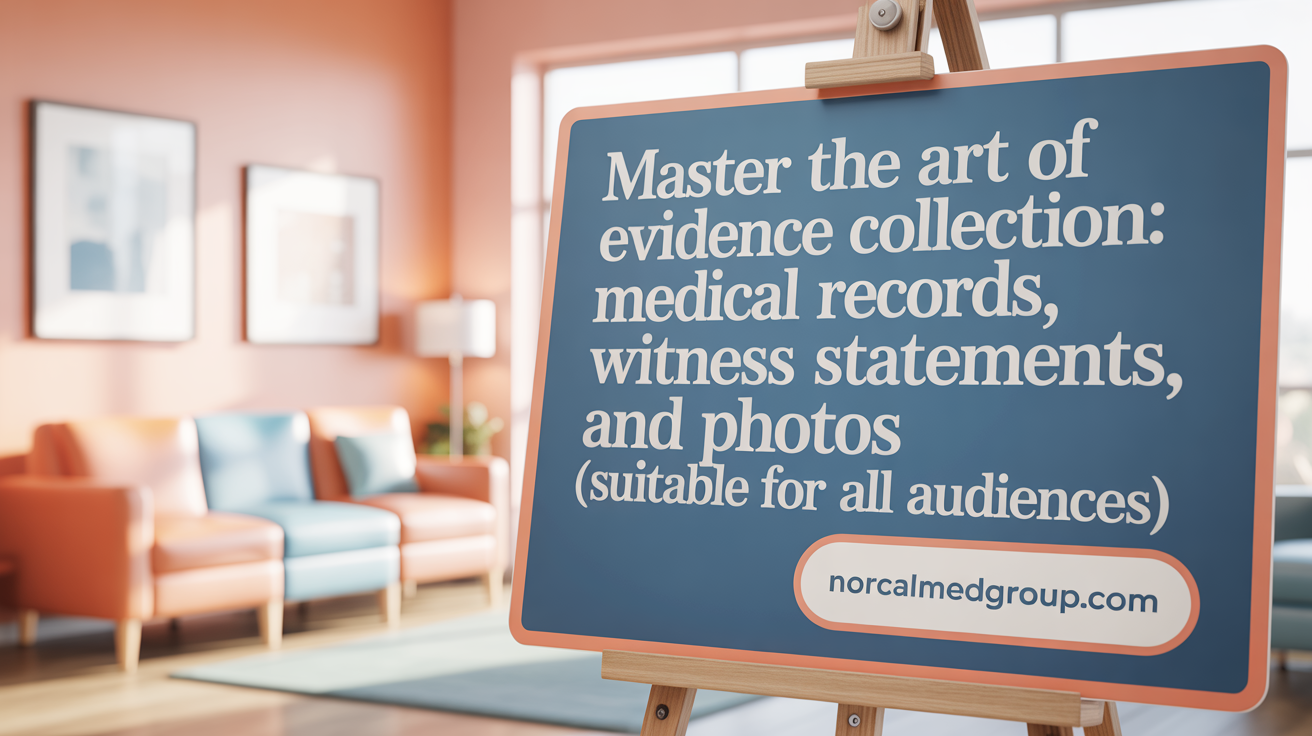 Building a strong personal injury claim relies heavily on thorough and strategic evidence gathering. Among the most critical pillars are medical records, police reports, and expert testimonies. Medical documentation not only confirms the extent and severity of injuries but also establishes causation, linking the harm directly to the accident. These records include emergency reports, diagnostic test results, treatment notes, and ongoing care documentation.
Building a strong personal injury claim relies heavily on thorough and strategic evidence gathering. Among the most critical pillars are medical records, police reports, and expert testimonies. Medical documentation not only confirms the extent and severity of injuries but also establishes causation, linking the harm directly to the accident. These records include emergency reports, diagnostic test results, treatment notes, and ongoing care documentation.
Equally important are eyewitness statements, captured promptly after the incident. Witness accounts can corroborate scene details, fault, and accident circumstances, reinforcing the claimant’s version of events. Collecting contact information from witnesses ensures their availability if further testimony becomes necessary.
Photographic and video evidence serve as powerful visual aids. Taking clear photos immediately following the incident helps document the scene’s condition, hazards, damage, and injuries. High-resolution images, timestamps, and GPS data accessed via smartphones improve their evidentiary value. Videos can demonstrate ongoing hazards or the sequence of events, making them invaluable in establishing negligence.
Timely collection of physical evidence, such as damaged property, clothing, or personal belongings, also supports claim credibility. Physical items can demonstrate the impact of the incident and substantiate damages.
Technology plays a crucial role in preserving evidence. Digital tools like secure cloud storage, specialized apps, and software for organization help maintain evidence integrity, prevent loss, and streamline access. These tools can include features for tagging, timestamping, and categorizing evidence, simplifying later analysis.
In addition, maintaining personal diaries or injury journals that record pain levels, emotional responses, and daily impacts provides supplementary context that humanizes the claim. When combined, these methods create a comprehensive, coherent picture of the incident, facilitating effective legal representation and increasing the chance of a favorable outcome.
Therefore, the best evidence gathering techniques for injury claims involve collecting comprehensive medical records, securing immediate photographic and video documentation, gathering witness statements, and utilizing technology for evidence management. This multi-faceted approach ensures a robust factual foundation vital for supporting the claim and effectively countering defenses.
Harnessing Medical Insights to Assess Injury Severity and Understand Damages
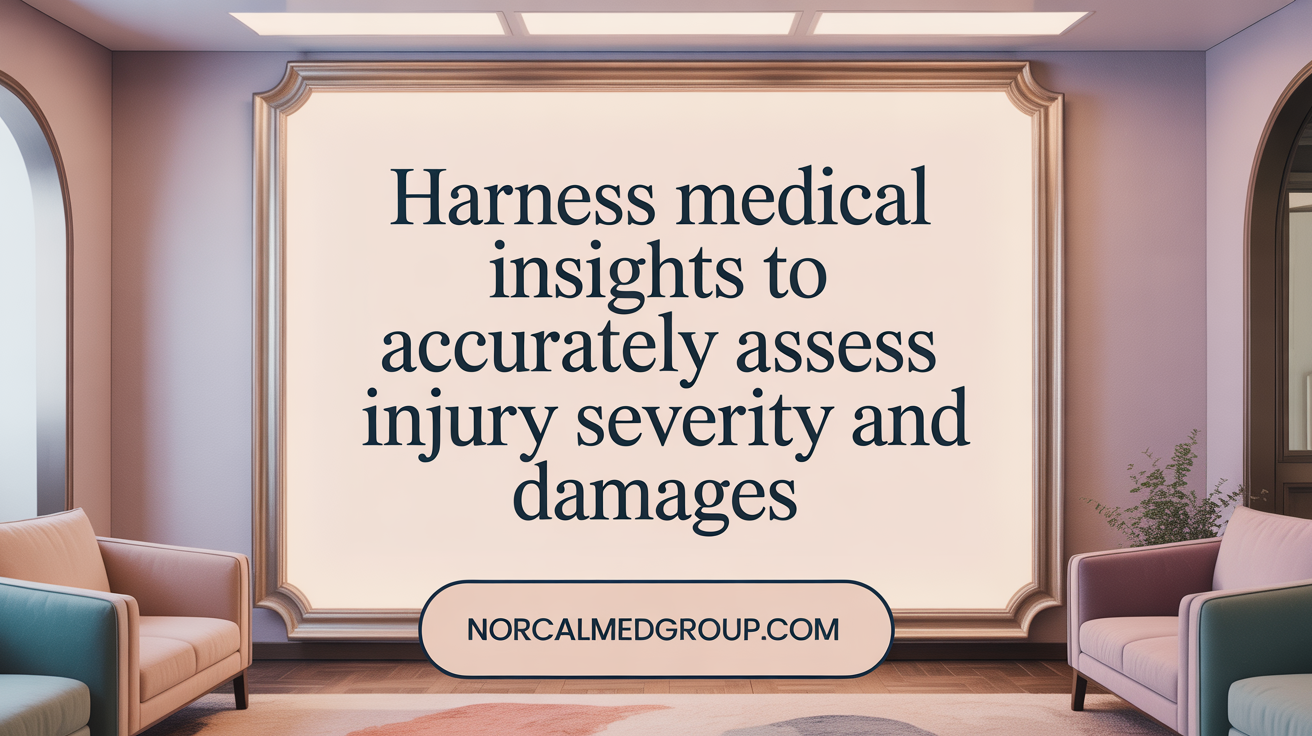
How can medical insights aid in understanding damages and assessing injury severity?
Medical insights are essential in defining how serious an injury is and what damages a victim may claim. Medical professionals evaluate injuries through physical examinations, psychological assessments, and diagnostic tests. These tools help measure both immediate harm and potential long-term impacts.
Trauma scores, such as the Trauma Index (TI), provide quick, objective measures of injury severity. These scores assist in early decision-making by offering a standardized way to compare injuries and predict future care needs.
Medical experts analyze diagnostic data including X-rays, MRIs, and CT scans. They also review treatment histories and prognosis reports to establish the causation between the accident and injuries. This analysis helps quantify damages and supports claims for medical expenses, lost income, and pain and suffering.
Expert testimony simplifies complex medical information into understandable evidence for courts and insurance companies. Their evaluations highlight the injury's impact on the victim’s health and quality of life, helping ensure fair compensation.
Furthermore, thorough medical documentation links injuries directly to the incident, helping to prove negligence and the extent of damages. This detailed evidence also aids in estimating future medical costs and ongoing impairments.
In summary, medical insights—through evaluations, diagnostic data, and expert reports—play a vital role in accurately assessing injury severity and corresponding damages, guiding the legal process toward just resolutions.
Constructing Legal Arguments with Medical Testimony and Causation Evidence
How can legal arguments be constructed using medical testimony and causation evidence in injury claims?
Legal strategies in injury claims heavily depend on establishing a clear connection between the accident and the injuries sustained. To do this, claimants gather comprehensive medical records, diagnostic test results such as X-rays or MRIs, and detailed reports from healthcare providers. These documents provide concrete evidence of the injuries' severity and link them directly to the incident.
Expert witnesses, including medical professionals and accident reconstruction specialists, play an essential role in clarifying the nature and prognosis of injuries. They can explain complex medical terminology in plain language, helping courts and juries understand how the injuries are a direct result of the incident.
In medical malpractice cases, establishing causation involves demonstrating that the injury would not have occurred without the defendant’s negligence, satisfying the "cause in fact" test, and proving that the injury was a foreseeable consequence, satisfying the "proximate cause" standard.
By thoroughly collecting and presenting medical evidence and expert opinions, claimants can effectively argue that the defendant's actions directly caused the injuries. This approach not only supports the liability aspect of the case but also helps accurately quantify damages for the victim.
| Evidence Type | Role in Construction of Legal Arguments | Additional Details |
|---|---|---|
| Medical Records | Demonstrate injury details, severity, and causation | Includes ER reports, treatment notes, diagnostic tests |
| Diagnostic Test Results | Provide objective proof of injury and severity | X-rays, MRIs, CT scans confirm injuries |
| Expert Witness Testimony | Clarify injury extent, cause, and future impact | Medical experts explain causation and permanency |
| Accident Reports | Support the incident timeline and fault determination | Official records help establish liability |
Using these comprehensive medical pieces, legal arguments become more persuasive, enabling claimants to meet the legal standards necessary to prove causation and liability effectively.
Maximizing Compensation Through Integrated Medical and Legal Strategies
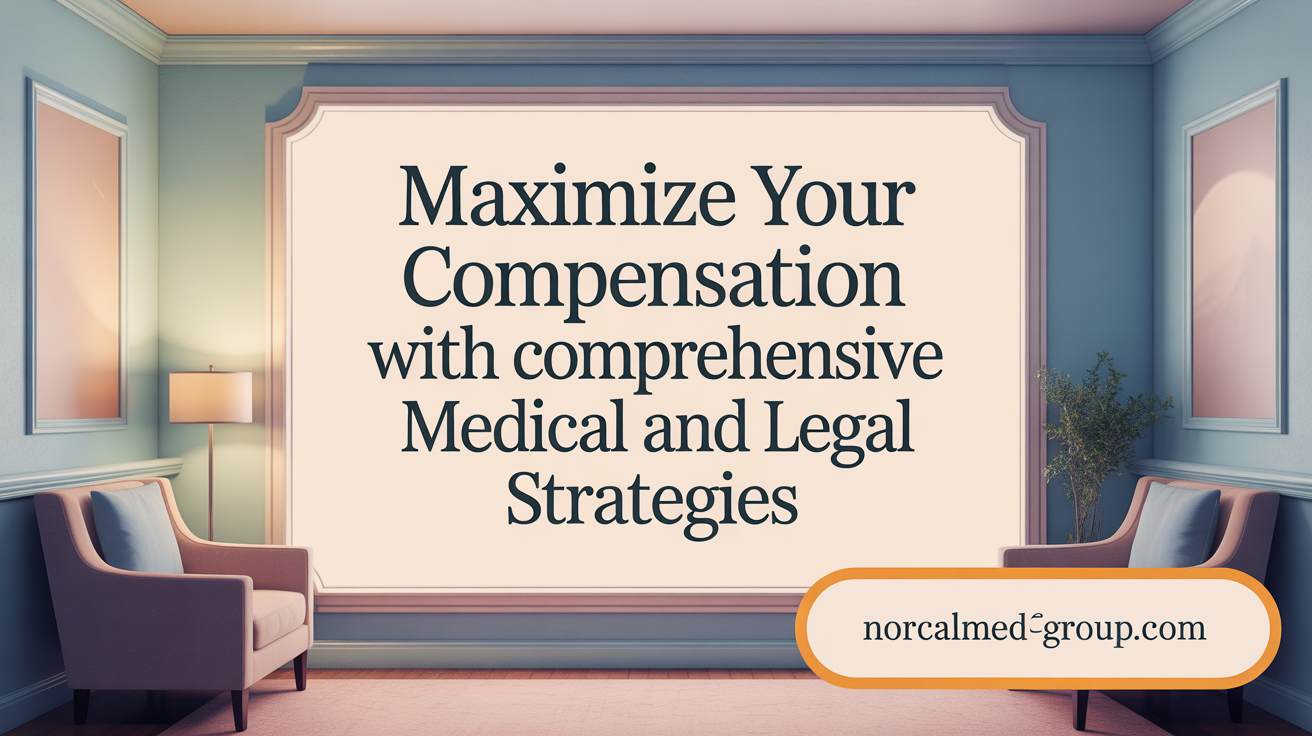
How can claimants maximize compensation through combined medical and legal strategies?
Maximizing compensation requires a comprehensive approach that involves both diligent medical documentation and strategic legal actions. Initially, claimants should seek prompt medical treatment after an incident. Early medical attention not only ensures health but also helps establish an official record linking injuries to the accident, which is vital for the claim.
Thorough record-keeping is crucial. This includes collecting medical reports, imaging results like X-rays or MRIs, prescriptions, and treatment summaries. These documents provide objective evidence of injury severity and causation. Additionally, photographs of the scene, injuries, and property damage, witness statements, and personal journals documenting pain and emotional distress strengthen the case.
Partnering with an experienced personal injury lawyer can significantly impact the outcome. Skilled legal counsel assesses all damages—including current and future medical costs, lost wages, and pain and suffering—and ensures these are properly valued and justified during negotiations.
Legal experts also help craft effective settlement strategies, choosing the right timing to negotiate and avoiding the pitfall of accepting low initial offers. Patience is essential; rushing settlement or settling too early often results in lower compensation.
Furthermore, protection from social media oversharing or admitting fault during the process is vital. Keeping communication professional and guarded ensures the evidence remains strong and uncontaminated. Carefully coordinating medical evidence with legal insights maximizes the settlement potential.
Finally, understanding and respecting statutes of limitations guarantees that claims are filed on time, preventing loss of rights. Tactically, claimants should preserve all evidence—both digital and physical—and work closely with legal professionals to build a compelling case that encompasses all damages, including future medical care needs and non-economic losses like pain and suffering.
By combining meticulous medical documentation with strategic legal planning, claimants significantly increase their chances of securing maximum compensation for their injuries.
Best Practices for Organizing and Presenting Medical Evidence
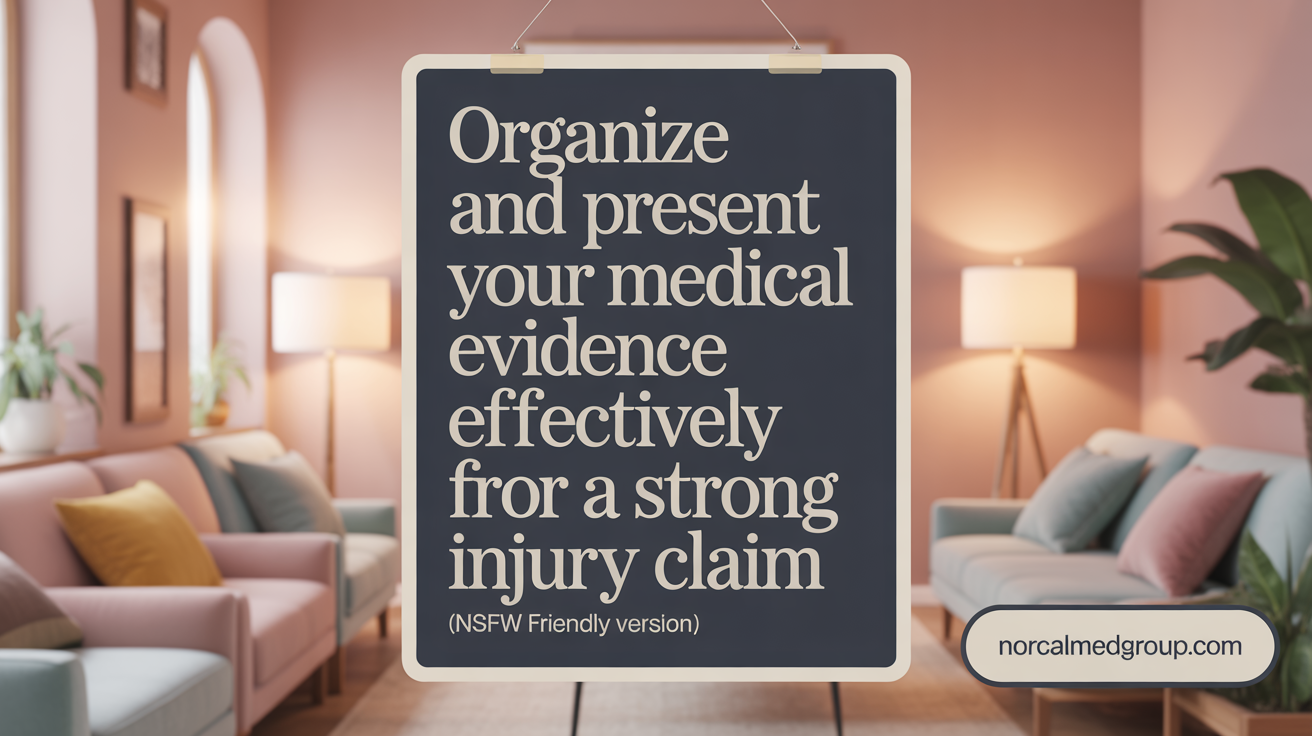
What are the best practices for organizing and presenting medical data to support injury claims?
Effectively organizing medical evidence is critical for building a strong personal injury claim. One of the most effective methods is to develop detailed, chronological medical chronologies that outline every step of the injury and treatment process. This includes documenting initial diagnosis, treatments received, diagnostic test results such as X-rays or MRIs, and follow-up care.
Using modern digital tools and AI-powered systems can significantly streamline this process. These technologies help in creating searchable, well-structured summaries of medical documents, making it easier for legal teams to analyze and present evidence.
Categorizing all medical documents by type and relevance enhances clarity during review. For instance, separating treatment notes, diagnostic reports, prescriptions, and billing statements allows for quick identification of key information.
To ensure the evidence is understandable to non-medical audiences, translating complex medical jargon into clear, plain language is recommended. This enhances the communication of injury severity, causation, and future medical needs.
Legal compliance and confidentiality are paramount. Handling medical records in accordance with privacy laws such as HIPAA involves secure storage and careful sharing of sensitive data. Maintaining proper documentation practices not only upholds legal standards but also strengthens the credibility of the claim.
By adopting these best practices—through comprehensive chronologies, effective categorization, technological aid, clear communication, and adherence to legal standards—claimants can present compelling evidence that effectively supports their injury claims and maximizes their chances of a favorable outcome.
Educational Guidance for Building Strong Injury Claims from Medical and Legal Perspectives
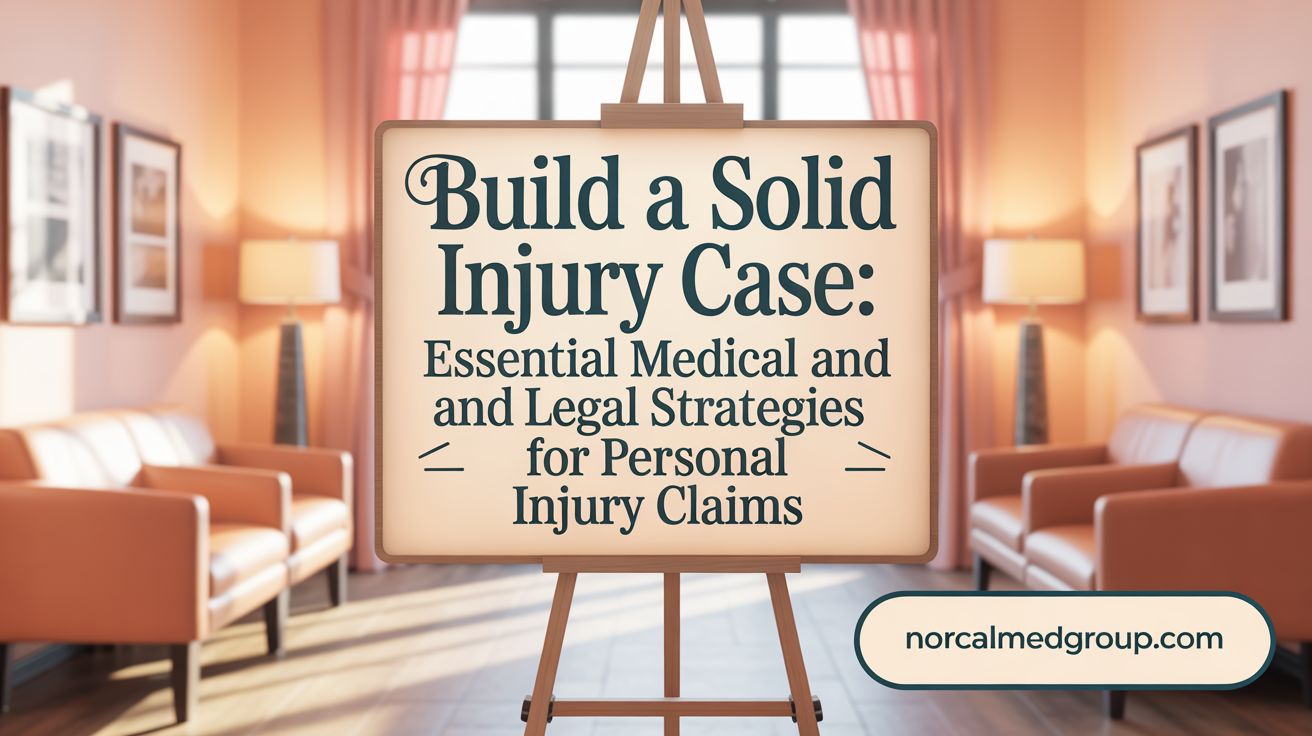
What educational guidance should be provided to individuals seeking to build solid injury claims from both medical and legal perspectives?
Building a robust personal injury claim requires knowledge, preparation, and strategic action. First and foremost, individuals should understand the importance of seeking immediate medical evaluation after an incident. Early treatment not only helps in recovery but also provides critical documentation—such as medical reports, test results, and treatment notes—that serve as objective proof of injuries.
Thorough record-keeping is essential. Claimants should collect all relevant medical records, incident photographs, videos, witness statements, and personal diaries that document their injury and recovery process. Maintaining detailed and organized evidence helps establish causation, severity, and damages, which are vital to building a compelling case.
From a legal standpoint, understanding the claim process, including statutes of limitations, is crucial. Consulting an experienced personal injury lawyer early can prevent common pitfalls, such as admitting fault or sharing sensitive details on social media, which may harm the case. Legal guidance also ensures proper evidence presentation and strategic negotiation with insurance companies.
Highlighting the potential for diagnostic errors through malpractice case examples can provide valuable awareness. For instance, misdiagnosis or delayed diagnosis can worsen injuries and complicate claims, but recognizing these issues allows claimants to pursue appropriate legal remedies.
Learning effective techniques for evidence collection—like capturing detailed witness statements, preserving physical evidence, and utilizing digital tools—can significantly strengthen claims. Case analyses demonstrate the importance of comprehensive documentation, expert testimony, and clear timelines, helping claimants understand how to navigate complex legal and medical landscapes.
Finally, understanding the procedural stages—investigation, negotiation, possible litigation, and settlement—empowers claimants to make informed decisions throughout their case. Overall, education from both medical and legal angles enhances the ability to build credible, well-supported injury claims, maximizing the chances of a favorable outcome.
Integrating Medical Insight for Robust Injury Claims
Building a solid personal injury claim strategy grounded in medical insight demands meticulous evidence gathering, comprehensive medical documentation, and strategic legal collaboration. Medical records and expert testimonies form the backbone of demonstrating injury severity, causation, and damages, while coordinated collection of witness statements, photographs, and incident reports strengthens the factual basis. Organizing this evidence with clarity and precision facilitates persuasive legal arguments and negotiation leverage. Educating claimants to navigate medical and legal complexities empowers them to avoid common pitfalls and optimizes claim outcomes. Ultimately, harmonizing medical expertise with legal strategy not only validates claims but also ensures rightful compensation, delivering justice and closure to injury victims.
References
- Strategizing Personal Injury Claims: Insights for Success -
- How Medical Documentation Impacts Your Personal Injury Claim
- What Makes a Strong Personal Injury Claim? Insights from ...
- Effective Strategies for Building a Strong Personal Injury Case
- 10 Key Factors in Winning a Medical Injury Case
- How to Build a Strong Personal Injury Case with Limited Evidence
- Maximizing Your Personal Injury Settlement Claim: Key Strategies
- Essential Guide to Claim for an Injury: Steps and Insights
- 10 Essential Steps to Take After an Injury to Build a Strong Personal ...
- The Importance of Medical Records in Proving Personal Injury Claims
